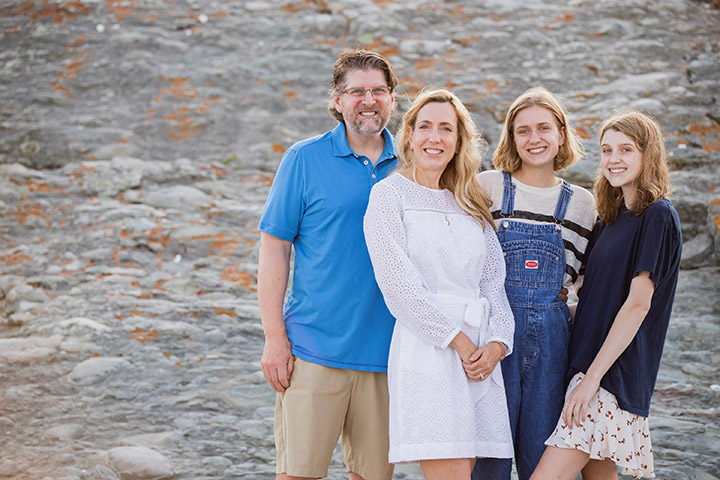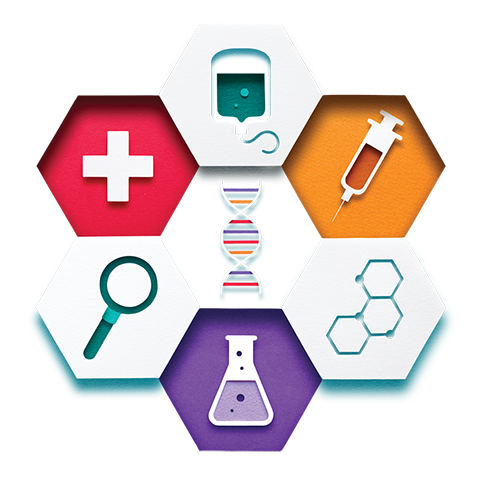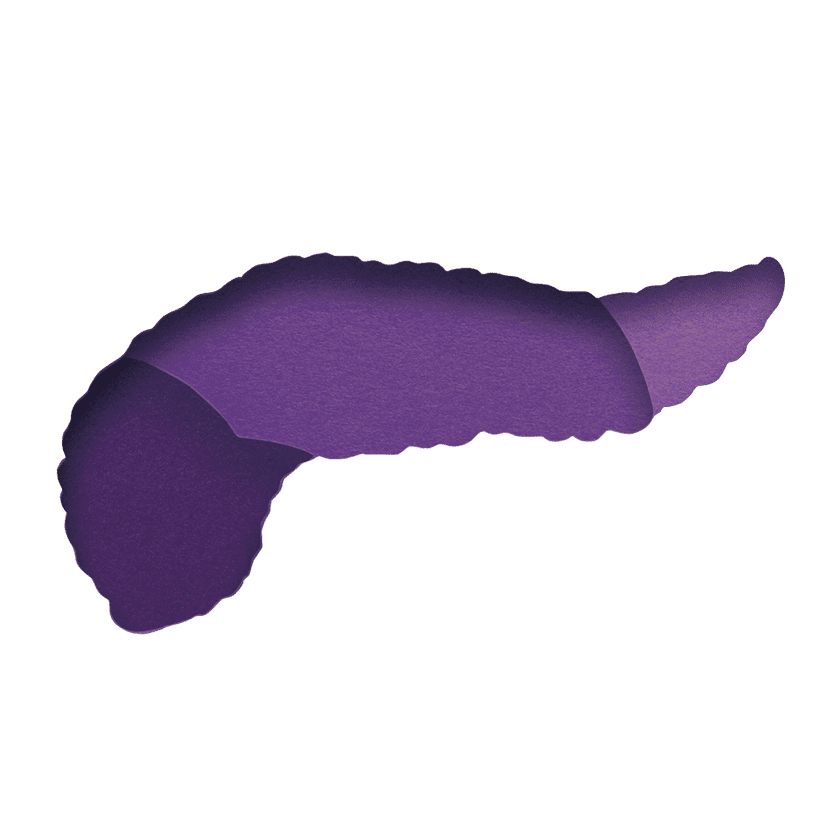Vigilance in Pursuing Symptoms Leads to Early Diagnosis

- Jaundice and persistence about symptoms lead to diagnosis
- Aggressive follow-up at a major cancer center
- Chemotherapy and chemoradiation
- Whipple procedure with complications
In late November of 2021 I noticed that for three days my urine was dark, as if I was dehydrated.
After trying to overhydrate on the fourth day I awoke to find my skin and eyes yellow. The following day I went to Urgent Care and was told immediately to go to the ER as this was jaundice and a very serious matter.
I went to the UConn John Dempsey Hospital ER and was immediately admitted. While my jaundice was painless, I underwent significant testing, including a CT scan, that showed a restriction in my bile duct. Given that the scan showed the pancreas as “unremarkable” the doctors focused in on my gallbladder. I underwent an ERCP to place a plastic stent in my bile duct to keep it open and then had successful surgery to remove my gallbladder. At the time the doctors thought that they had found the culprit, as the gallbladder was full of mucous that was mixing with bile from the liver to form a type of sludge in my bile duct. This was causing a back-up of bile and hence the painless jaundice. I was discharged after four days and told to come back in early January to have the plastic stent removed.
On January 5, 2022, I underwent another ERCP to have the stent removed. The doctor noticed some lesions on my bile duct. He took some brushings and said he would let me know if they turned up anything, but he did not consider it serious. Since this was an outpatient procedure I went home. Once I returned home I developed severe pain, cramping, and nausea, which caused me to return to the ER that night and be readmitted to the hospital. This time a CT scan showed “something” at the head of my pancreas, but the doctors were not quite sure what it was. The samples they took on January 5 came back as benign. I remained in incredible pain and was given Dilaudid on a regular (almost hourly) basis. At this point another ERCP was ordered for another stent in my bile duct. They took some additional samples of the area. I was discharged on strong antibiotics (as the thought was this was an infection) on January 9th after another three-night hospital stay, but was pain free thanks to the stent.
I had every known side effect to the antibiotics. I was supposed to take my youngest back to the University of Vermont on the 13th, but was just too knocked out to go, so my wife took her instead. That afternoon (the 13th) the doctor called me with the news. The more recent samples turned up an adenocarcinoma of the pancreas. I was devasted and alone. While the doctor informed me that he believed that it was found early and that I stood a good chance of having it removed I could barely register the conversation. I was scheduled to have an ERCP/EUS performed on the 19th, which confirmed the presence of a 2.5 cm tumor at the head of the pancreas.
Charting a Course
In order to stage the tumor, as well as to determine if it was resectable, the oncologist at UConn wanted a PET scan and another CT with contrast done. Unfortunately, to have those done at UConn would have taken about three weeks. There was no way I was going to wait that long. I called in a few favors with some friends at Hartford HealthCare and was able to do the PET and CT scans on January 25th. Those scans showed that the cancer was localized to the pancreas and had not spread.
I then took those results and all of my history since November and was able to secure an appointment on January 28th with Dr. Carlos Fernandez-del Castillo at Massachusetts General Hospital (MGH) in Boston. MGH is about a two-hour drive from my house.
Dr. Fernandez concluded that the tumor was resectable, but recommended neoadjuvant chemotherapy and chemoradiation prior to resection. He said a lot of the studies and data that MGH had looked at indicated that this led to much better patient outcomes. He also recommended a good oncologist for me to see in Hartford, Connecticut (where I live) so that I would not have to travel to MGH for my chemotherapy treatments. However, I would have to be at MGH for the chemoradiation. With his referral, and another call to cash in a favor, I was able to secure an appointment on February 2nd with Dr. Timothy Hong at Hartford HealthCare.
Treatment Begins With Chemotherapy
Dr. Hong agreed with Dr. Fernandez and staged the tumor at IIb. This was largely because the radiologist who read the CT scan believed that the cancer had entered one lymph node that was right next to the pancreas. Dr. Hong did a separate reading and thought that it was a “reflection” but deferred to the radiologist. He ordered a port installation on February 4th and had me start chemotherapy with a full dose of FOLFIRINOX on February 7th. This was to be an eight-cycle (four-month) course. To me this was amazing, as I would not even have had all the scans done had I stayed at UConn. So just around three weeks after my diagnosis I was starting my chemotherapy treatment. The best part was Hartford HealthCare had a cancer center for treatment in the town in which I live, so I only had a 15-minute commute from my house for treatments.
I tolerated the chemotherapy well. I had sensitivity to cold for about three days after treatment but I did not experience any other side effects. That being said, I did develop neuropathy after all the treatments were done. I am still being treated for that today with gabapentin. Dr. Hong and his staff made sure I was well prepared to deal with other side effects, but none materialized. Some of the drugs they gave did result in a lack of sleep during the chemotherapy, especially the steroid dexamethasone. I was not able to sleep the evening of my infusion, so I would stay up all night on the couch with the pump that I had to take home for 46 hours. I was able to continue working during chemotherapy. My company was extremely supportive of me during this time.
After two months of treatment I went in for another CT scan. This scan showed that the tumor had shrunk from 2.5 cm to 2.0 cm. The final scan after chemotherapy showed that the tumor remained stable. Dr. Hong was very satisfied with the results and thought that it teed it up nicely for the chemoradiation. As well, my CA 19-9 levels went from 230 at the beginning of chemotherapy to 19 at the end, which was well within the range of “normal.”
Time for Chemoradiation
In mid-June I started the chemoradiation at MGH under Dr. Ted Hong, who, as you may surmise, is the brother of Dr. Timothy Hong. I was also scheduled for the Whipple procedure on July 15th, which was right in line with the target date as per my treatment plan. I did 10 cycles (two weeks) of chemoradiation. This consisted of me being ”fitted” to the radiation machine and tattooed on my torso where they could align the machine each day. It was about a 15-minute start to finish procedure each day for 10 days (daily except for weekends). I took capecitabine tablets (seven per day—three in the morning and four in the evening) on the days that I had radiation. The tablets were a low-grade form of one of the drugs in the FOLFIRINOX cocktail, which was fluorouracil or 5-FU. I joked to my team that I liked that as I was able to give the big 5-FU to cancer.
Dr. Hong at MGH indicated to me, as I was going through the chemoradiation, that he would not be surprised if the tumor was dead at the time of surgery. He explained that the 2 cm size could be like an outline of a puddle on your driveway as it dries up in the sun and that any active portions of the tumor would be much smaller puddles inside the ”ring” or “outline” of the larger original puddle. I liked that analogy.
A Smooth Surgery Followed By Complications
July 15th finally came after a three-week break from the chemoradiation. The surgery went extremely well—Dr. Fernandez described it as better than textbook. He was able to remove the head of the pancreas with no problem and anatomically alter it and my stomach and liver to attach them to my large intestine. He also removed 16 lymph nodes. I did not have my spleen removed. The final pathology results were excellent. They showed that the cancer was contained to the head of the pancreas and had not metastasized as none of the lymph nodes showed any cancer cells. The pathology report credited the neoadjuvant treatment as very helpful in the reduction of the tumor and the final staging was Ib. I was in the hospital at MGH for four days and then was discharged home.
I would love to end my story there; however, I developed an infection about six weeks post-surgery and my recovery declined rapidly at that point. I developed sepsis and was admitted to Hartford Hospital, where I remained in the ICU for two months battling the infection. All told I had two instances of cardiac arrest and had to be put on dialysis in order to finally clear the infection from my bloodstream. It was a very anxious time for my family and friends, but I was determined to keep fighting and living. Once I recovered I spent a month at the Hospital for Special Care where I was closely monitored while I underwent physical and occupational therapies to be able to relearn how to walk and care for myself. I was discharged home on November 22nd, right before Thanksgiving, approximately one year after this whole ordeal started.
Life After and Recommendations to Others
As a result of the infection I had numerous CT scans in August and September. So many that Dr. Hong (my oncologist in Hartford) declared that I was cancer free and that I should go to a six-month scan interval. My next CT scan is scheduled for June 2023. My latest CA 19-9 level was 13, as of January 25, 2023.
I am grateful to all the doctors at UConn for their persistence and vigilance in trying to diagnose the issue; as well, I am incredibly grateful to my care teams at Hartford HealthCare and Massachusetts General Hospital. I am here today because of some incredibly miraculous things.
When I was first diagnosed, the first thing I did was find a therapist to take care of my mental health. The tools they provide in terms of coping, mindfulness, and focusing on what the data tells you was incredibly impactful. I think the mental health aspect of dealing with this disease often gets overlooked, therefore I wanted to put a plug in for the importance of taking care of your mental health, and a positive attitude is just as important as all the physical work you go through as well. Without my therapist, Dr. Judith Cooney at UConn Health, I would have had a much tougher time going through treatment.
I have remained positive throughout this journey and have no doubt that my faith in God and modern medicine helped me through this ordeal and allowed me to get a diagnosis in the early stage.







